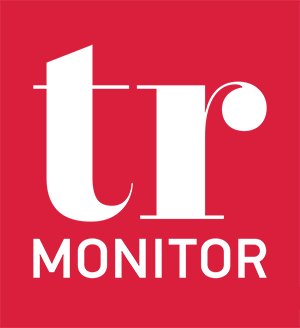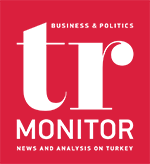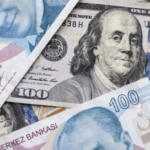Let me start with a correction and an apology. In my article in this column yesterday, based on Central Bank data, I stated that the annual interest rate on deposits with a maturity of up to three months, i.e. deposits with a maturity of 32 days, reached 50.49 percent on December 8, and that the compounding of this interest rate would reach around 60 percent. The fact that I overlooked was that the 50.49 percent interest rate was already a compounding rate, whereas I considered this rate as a simple interest rate and calculated a compounding rate.
Therefore, the data set has completely changed…
According to Central Bank data, as of December 8, the average compound interest rate weighted by the amount of deposits of banks is as follows according to maturities:
“41.97 percent for maturities up to one month, 50.49 percent for maturities up to three months, 47.46 percent for maturities up to six months, 39.35 percent for maturities up to one year, 38.10 percent for maturities of one year and longer, and 44.94 percent for all maturities.”
It is known that savers’ preferred maturity is 32 days. Accordingly, it is the interest rate of 50.49 percent for deposits with a maturity of up to three months that should be taken as a basis and analyzed…
Net goes down to 47-48 percent
Deposits with a maturity of up to three months are predominantly 32-day maturities, but of course it is not possible to rotate any account 12 times for a year with a maturity of 32 days. Because in this case the year is not enough!
However, for ease of calculation, let us assume that the annual interest rate of 50.49 percent is applied to monthly accounts.
Accordingly, the annual gross interest rate, which will result in an annual compound interest rate of 50.49 percent, is 42 percent, while the monthly gross interest rate is 3.5 percent. The net monthly interest after deducting withholding tax is 3.3 percent.
If an account is rotated 12 times a year with a net interest rate of 3.3 percent, the annual net return is 47-48 percent. Of course, if the interest rate does not change at all in a year…
According to the current rates, Turkish Lira deposits with a maturity of up to six months are subject to a 5% withholding tax, while those with maturities between six months and one year are subject to a 3% withholding tax. The withholding tax on deposits with maturities longer than one year is zero.
Accordingly, we deduct 5 percent withholding tax from deposits with a maturity of 32 days and calculate net interest. The result is a monthly net interest rate of 3.3 percent and an annual net interest rate of 47-48 percent.
Where is the real interest rate?
“This is the interest rate that is said to have gone up too much!
This is the interest rate that Central Bank Governor Gaye Erkan said, “It is mathematically absurd to switch to foreign currency despite such an interest rate”!
The monthly average is 3.3 percent, the annual net 47-48 percent…
And inflation, what is the level of inflation?
Okay, we are not looking at the past inflation.
Let’s look at the next period in which this interest rate will be paid and make the comparison that way.
For example, what level of inflation is expected this month, in December?
Around 3 percent, maybe even slightly below that. If it goes up, the real interest rate will be zero, and who knows, you may even see a real loss!
Let’s get through December; what about the period until May?
High inflation is expected in the first five months.
This is neither my expectation nor the market’s expectation.
This forecast belongs entirely to the Central Bank.
According to the Central Bank, annual inflation will peak at 74 percent in May. If we close this year at 65 percent, the annual rate will rise to 74 percent in May, which means that the average monthly price increase in the first five months will be 4 percent. What is the monthly net interest, 3.3 percent…
What is the expected monthly inflation in the January-May period, 4 percent….
Shouldn’t we now ask, “Where is the real interest rate?”
Unless a new mathematical formula has been discovered that shows that 3.3 is greater than 4, isn’t it a bit unfair to accuse those who find this interest rate inadequate and consider foreign exchange as an option of exhibiting a “mathematically absurd” behavior?
Nobody should draw the following conclusion from what I have said. I am not saying that “foreign exchange yields more than inflation, therefore foreign exchange should be preferred over interest rates”, there is no such guarantee. But those who choose foreign exchange should not be subjected to this undeserved accusation because of their choice.
I wrote yesterday that there are billions of dollars in foreign currency deposit accounts in banks, belonging to citizens and companies. They are also not exchanging their foreign currency and switching to TRY despite this interest rate. So, are we going to say to them, “They are exhibiting a mathematically absurd behavior”?
Citizens can choose to utilize their savings as they wish, or even not save at all, eat, drink and travel…
What should be looked at are those who spend the state’s money without the care they show for their own money, those who put all citizens in difficulty with the decisions they take, and those who stir up trouble with a statement they make.







